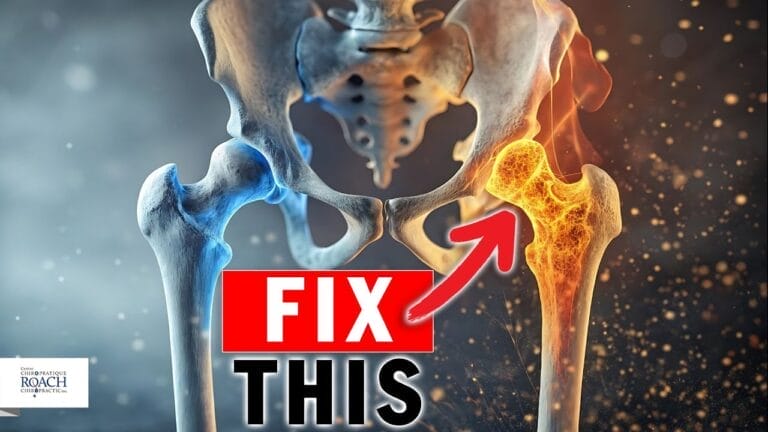TOP 5 Causes Of Sciatica Pain

Sciatica is a painful condition that affects millions of people worldwide, causing discomfort that radiates from the lower back down the legs. While sciatica is often mistaken for a standalone condition, it is actually a symptom of an underlying issue affecting the sciatic nerve. Chiropractic care offers a natural, non-invasive approach to managing sciatic pain by addressing its root causes and improving spinal health. This blog explores the top five causes of sciatica pain, how to identify symptoms, and effective chiropractic solutions for long-term relief.
Understanding Sciatica: Canadian & Global Statistics
Sciatica is a widespread issue, with significant implications for healthcare systems and workplace productivity.
- In Canada, 5–10% of patients with low back pain experience sciatica.
- Sciatica affects 10–40% of people at some point in their lifetime.
- Globally, 90% of sciatica cases are caused by a herniated disc compressing the nerve.
- Certain occupations, including machine operators and truck drivers, are at higher risk for developing sciatic pain.
These statistics highlight the importance of proactive care and effective treatment strategies, such as chiropractic adjustments, to improve mobility and reduce pain.
Top 5 Causes of Sciatica Pain
1. Herniated Disc
A herniated disc is the most common cause of sciatica. When a spinal disc ruptures or slips out of place, it exerts pressure on the sciatic nerve, resulting in pain and discomfort. Chiropractic adjustments help alleviate the pressure on the nerve, reducing pain and promoting healing.
2. Spinal Stenosis
Spinal stenosis occurs when the spinal canal narrows, placing undue pressure on the nerves in the spine, including the sciatic nerve. Chiropractic treatment can help improve spinal alignment, relieving this pressure and minimizing sciatic pain.
3. Piriformis Syndrome
The piriformis muscle, which connects the lower spine to the hip, can be a source of sciatica if it becomes tight or spasms. Chiropractic care often includes techniques to relax and release tension in the piriformis muscle, reducing the pressure on the sciatic nerve.
4. Spondylolisthesis
Spondylolisthesis occurs when a vertebra in the spine slips out of its natural position, compressing the sciatic nerve. Chiropractic adjustments can help to realign the spine, restoring the vertebra to its correct position and relieving nerve pressure.
5. Trauma or Injury
Injuries to the lower back or legs, whether from a fall, car accident, or other incidents, can lead to sciatica. Chiropractic care is effective in treating these injuries by addressing misalignments, reducing inflammation, and supporting the body’s natural healing processes.
Identifying Symptoms of Sciatica Pain
Recognizing the symptoms of sciatic pain is essential for early intervention. Common signs include:
- Sharp or burning pain radiating from the lower back down the leg.
- Numbness or tingling in the affected leg or foot.
- Weakness in the leg or difficulty walking.
- Pain that worsens with prolonged sitting or standing.
- Discomfort when bending or twisting the spine.
If these symptoms persist, seeking chiropractic care can help address the underlying causes and prevent further complications.
Short & Long-Term Benefits of Chiropractic Care for Sciatica Pain
Short-Term Benefits
- Immediate relief from nerve compression and discomfort.
- Improved posture and spinal alignment.
- Enhanced mobility and flexibility.
Long-Term Benefits
- Sustained pain reduction and improved spinal health.
- Strengthened musculoskeletal system.
- Reduced risk of recurring sciatic pain.
Best Practices & Daily Routines for Sciatica Pain Prevention
- Maintain proper posture while sitting and standing.
- Engage in regular chiropractic visits for spinal health.
- Perform core-strengthening exercises to support spinal alignment.
- Stay hydrated and consume nutrient-rich foods.
- Incorporate mindfulness techniques to enhance body awareness.
Exercises & Stretches to Relieve Sciatica Pain
Piriformis Stretch
- Sit on a chair and cross one leg over the other in a figure-four position.
- Lean forward slightly until you feel a stretch.
- Hold for 30 seconds and switch sides.
Knee-to-Chest Stretch
- Lie on your back and pull one knee toward your chest.
- Hold for 20–30 seconds, then switch sides.
- Repeat 3–5 times.
Cat-Cow Stretch
- Start on all fours and alternate between arching and rounding your back.
- Perform slow, controlled movements for 30 seconds.
The Importance of Consistent Chiropractic Care
Regular chiropractic care ensures that spinal health remains optimal, preventing sciatic pain-related issues. Ongoing adjustments help maintain nervous system function, allowing the body to operate at peak efficiency. By committing to consistent chiropractic visits, individuals can experience sustained improvements in mobility, posture, and overall wellness.
Take Control of Your Sciatic Pain Today
Sciatic pain can be debilitating, but chiropractic care offers a natural, effective solution for relief and prevention. Whether addressing spinal misalignments, optimizing mobility, or incorporating targeted exercises, chiropractic solutions provide lasting benefits.
For personalized chiropractic care tailored to your needs, contact Roach Chiropractic today and take the first step toward a pain-free, healthier life.
SHARE THIS






